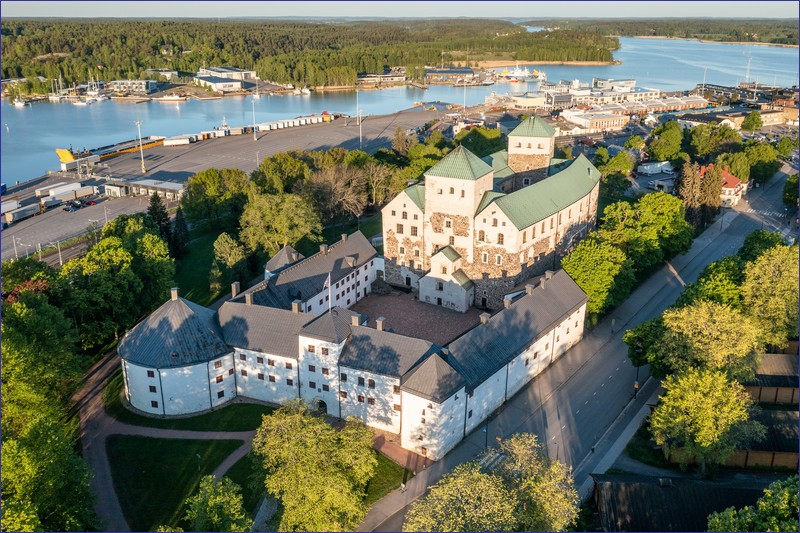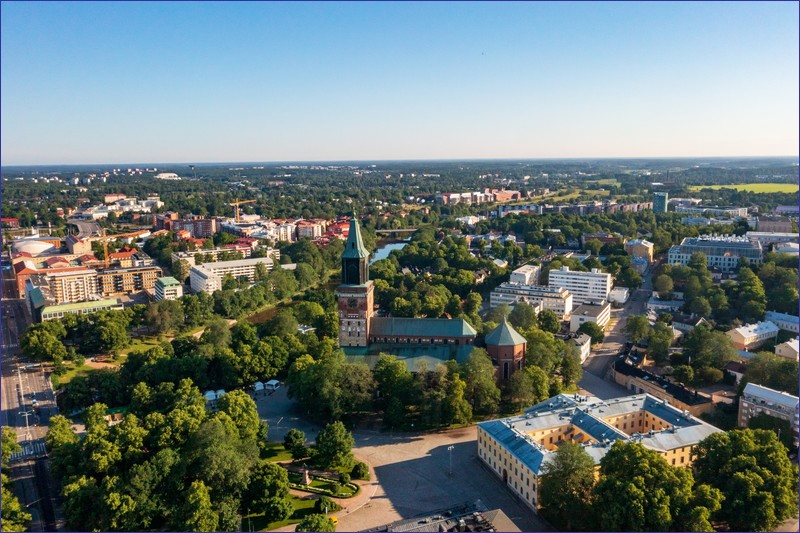Turku is the second-largest city in Finland. For a long time, it was the country’s capital until the capital was moved to Helsinki in 1812. In 1827, most of the city was destroyed by a great fire. The city center was rebuilt in a neoclassical style, modeled after St. Petersburg.
Architecturally, Turku is not considered one of the most beautiful cities, though it has preserved several interesting monuments. Most important is Turku Castle (Turunlinna), built around 1280. It was strengthened and remodeled in the 15th century. In the 17th century, the fortress served as the official residence of John III Vasa, Grand Duke of Finland. Today, the castle houses a history museum with a variety of permanent exhibitions. It is a must-visit when in Turku.
Near the castle is the Maritime Museum, showcasing Finland’s rich seafaring history. It features interactive displays and a children’s section, with the boats moored at the quay being of particular interest.

The city’s second most important monument is the cathedral, erected in the 13th century on Sheep Hill (a pre-Christian place of worship). Over the centuries, it was expanded, but several fires broke out inside. The worst damage came from the fire of 1827, when the oldest clock in the country fell from the bell tower and was completely shattered. The clock was repaired and still works. The cathedral is the seat of the Archbishop of Finland and the most important place of worship for Finns. Inside, visitors can admire restored frescoes, sculptures, stained-glass windows, royal tombs, and the Cathedral Museum.
The Turku Art Museum (Turun taidemuseo) is one of the oldest and most renowned museums in Finland. Founded in 1904, it houses a rich collection of works by Finnish and international artists, mostly from the late 19th and early 20th centuries, as well as contemporary art. The museum’s main focus is the history of Finnish painting. It is located in a beautiful early 20th-century building combining elements of Art Nouveau and neoclassical architecture.
In the city center, it is also worth visiting the small Luostarinmäki Open-Air Museum. This museum, with its exhibition of traditional crafts and handicrafts, was created in wooden houses from the oldest part of Turku. A few of these houses survived the great fire of 1827. The museum receives very good reviews.
The Pharmacy Museum and Qwensel House, located in the former home of an apothecary’s family, also receives excellent reviews. Its permanent exhibitions present the history of pharmacy as well as the daily life of the city’s residents in past centuries.
Nearby, Aboa Vetus Ars Nova combines a contemporary art museum with a museum of local history.
Finally, to conclude a visit to Turku, it is worth stopping by the Market Hall, built in 1896. The stalls are filled with local specialties and traditional Finnish flavors, alongside oriental cuisines, cafés, and small eateries.
Related articles:
Train travel in Finland – a comprehensive guide
